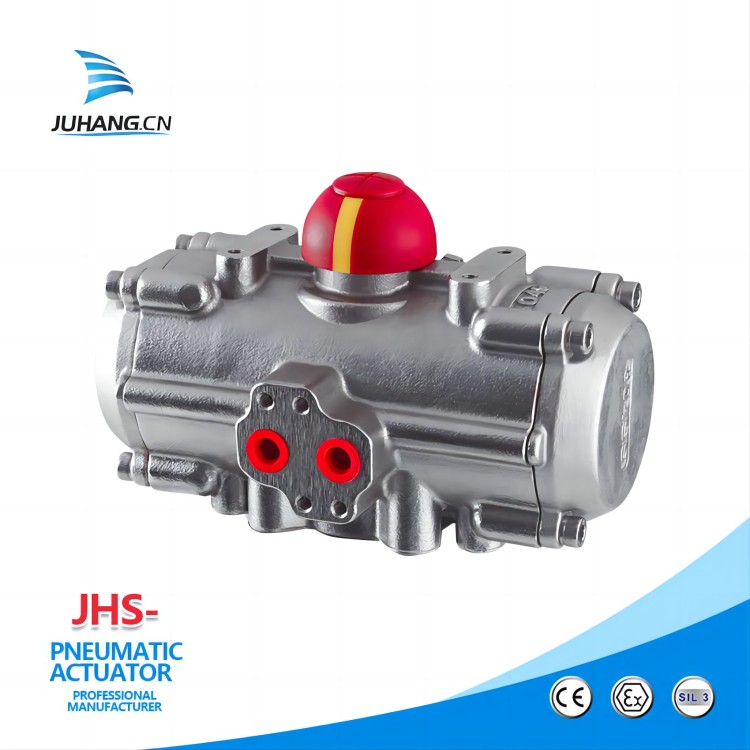1. Leakage problem of pneumatic actuators
During the operation of pneumatic actuators, leakage is a common fault phenomenon, which will not only slow down the action speed of the actuator, but also cause it to fail completely, thus affecting the overall production efficiency. The main causes of leakage and corresponding solutions are as follows:
Failure of seals: The seals in the pneumatic actuator may be worn or damaged due to long-term use or aging of the material, resulting in gas leakage. At this time, new seals should be replaced in time.
Loose threaded connection: If the threaded connection at the interface is not tightened or loose, gas will leak from the gap. Use appropriate tools to retighten the threads to ensure a tight connection.
Pipeline connection problem: If the pipeline connection is not installed correctly or the connection is not firm, it will also cause gas leakage. The pipeline should be checked and reconnected to ensure that the connection is firm and leak-free.
2. Stuck phenomenon of pneumatic actuators
After long-term use, pneumatic actuators may become stuck, resulting in failure to work properly. The following are the main causes and solutions for the stuck phenomenon:
Poor lubrication: If the lubrication system of the pneumatic actuator fails, such as insufficient or contaminated lubricating grease, it will increase the friction of internal parts, causing stuck. At this time, lubricating grease should be added or replaced to ensure the normal operation of the lubrication system.
Valve core stuck: The valve core is one of the key components of the pneumatic actuator. If the valve core is contaminated or damaged, it will not work properly and cause jamming. Use a cleaning solvent to clean the valve core and check whether it is damaged. If it is damaged, replace it with a new valve core.
Gear failure: If the gears in the pneumatic actuator are skewed or damaged, it will also cause it to not work properly. At this time, new gears should be replaced to ensure the normal operation of the actuator.
3. Failure of pneumatic actuators
Failure of pneumatic actuators means that they cannot achieve the expected function or action. The following are the main causes and solutions for failure problems:
Insufficient air pressure: If the air pressure of the pneumatic actuator is too low, it will not provide enough power to drive the piston to move. At this time, the air pressure should be checked and adjusted to ensure that it is within the normal range.
Cylinder piston stuck: If the cylinder piston is contaminated or damaged, it will not work properly and cause failure. Clean the inside of the cylinder and check whether the piston is damaged. If it is damaged, replace it with a new piston.
Solenoid valve failure: The solenoid valve is a key control component in the pneumatic actuator. If the solenoid valve is damaged or faulty, it will cause abnormal gas flow and cause failure. At this time, a new solenoid valve should be replaced to ensure that the gas flow is correct.
